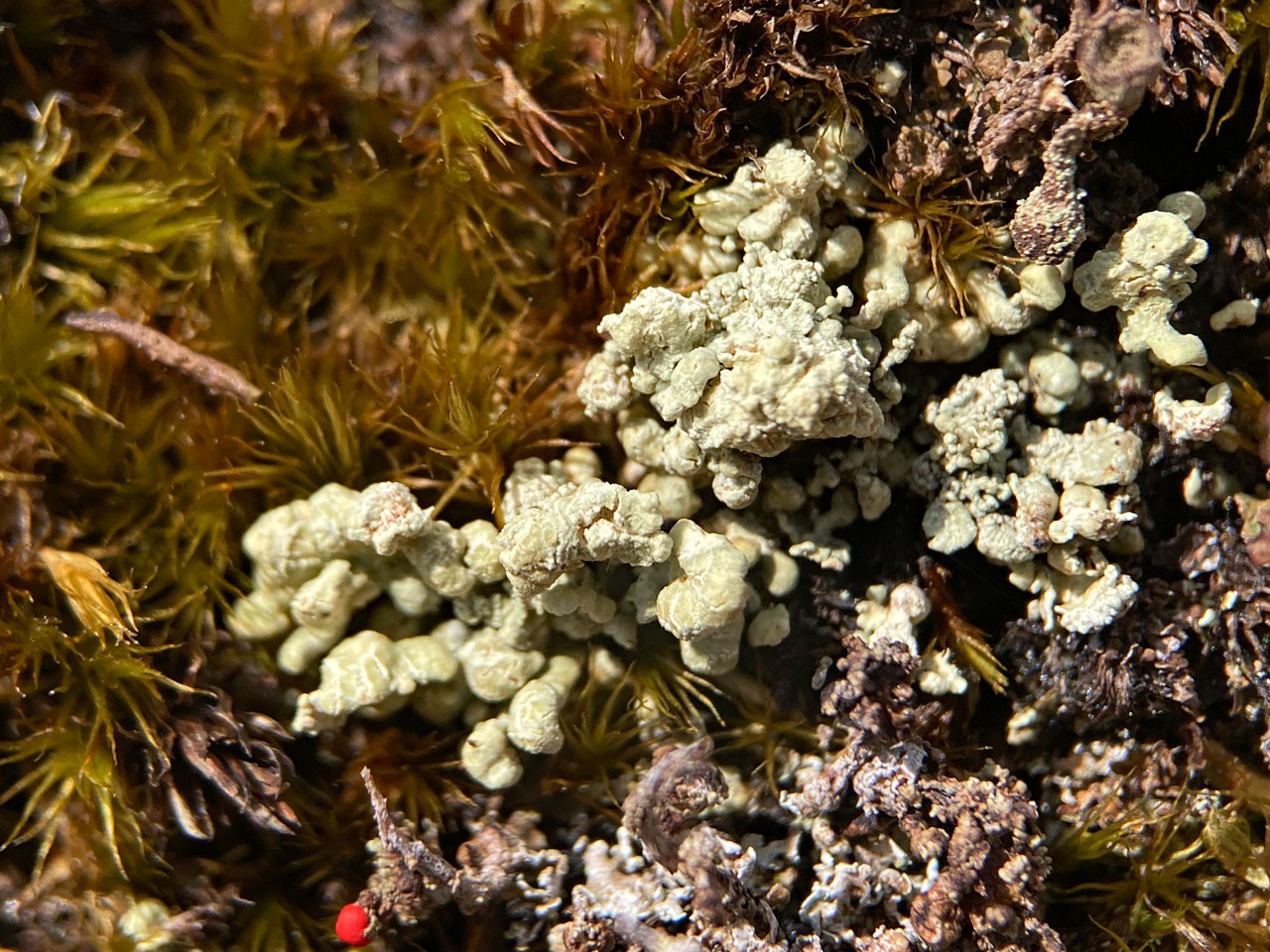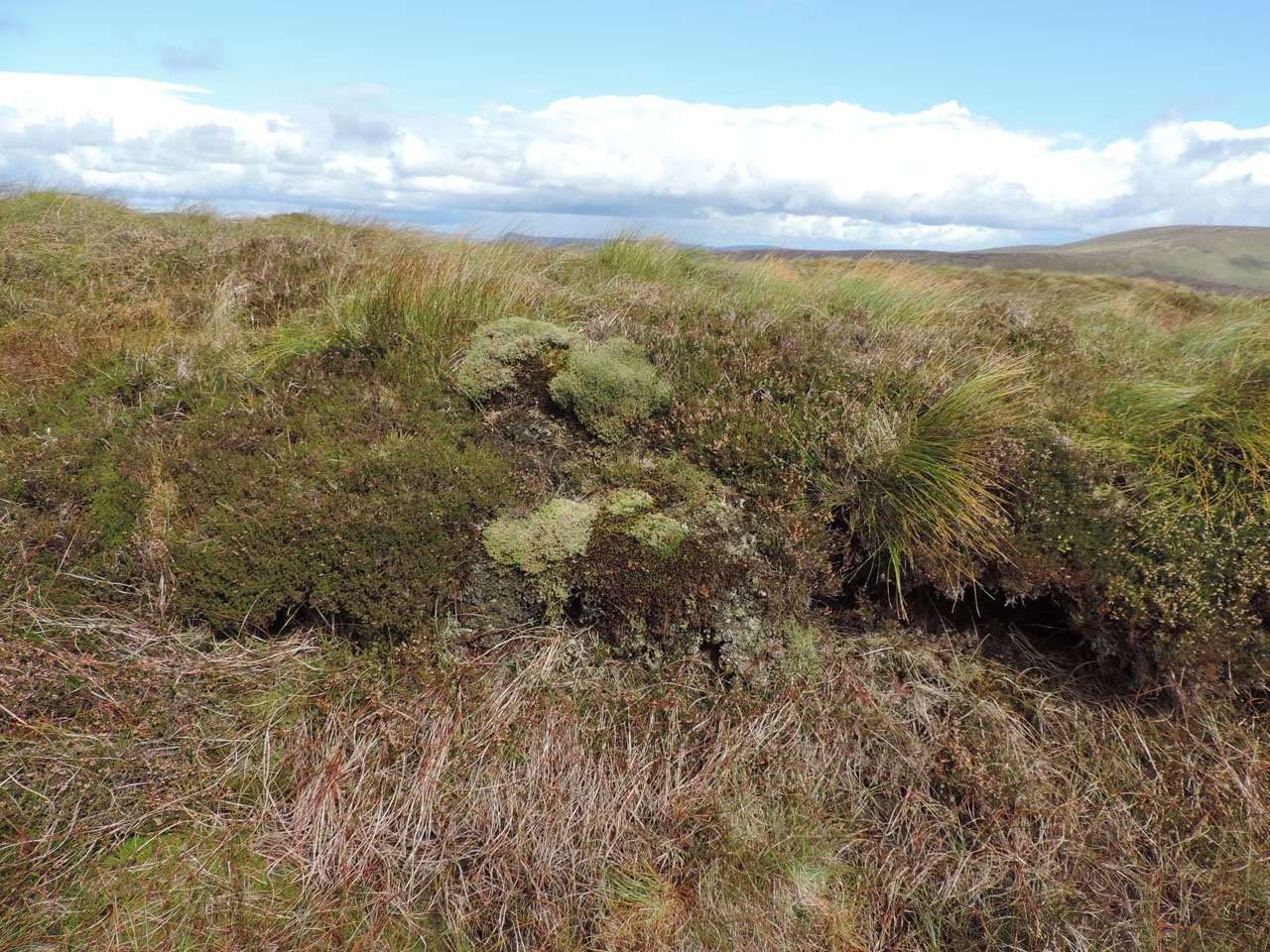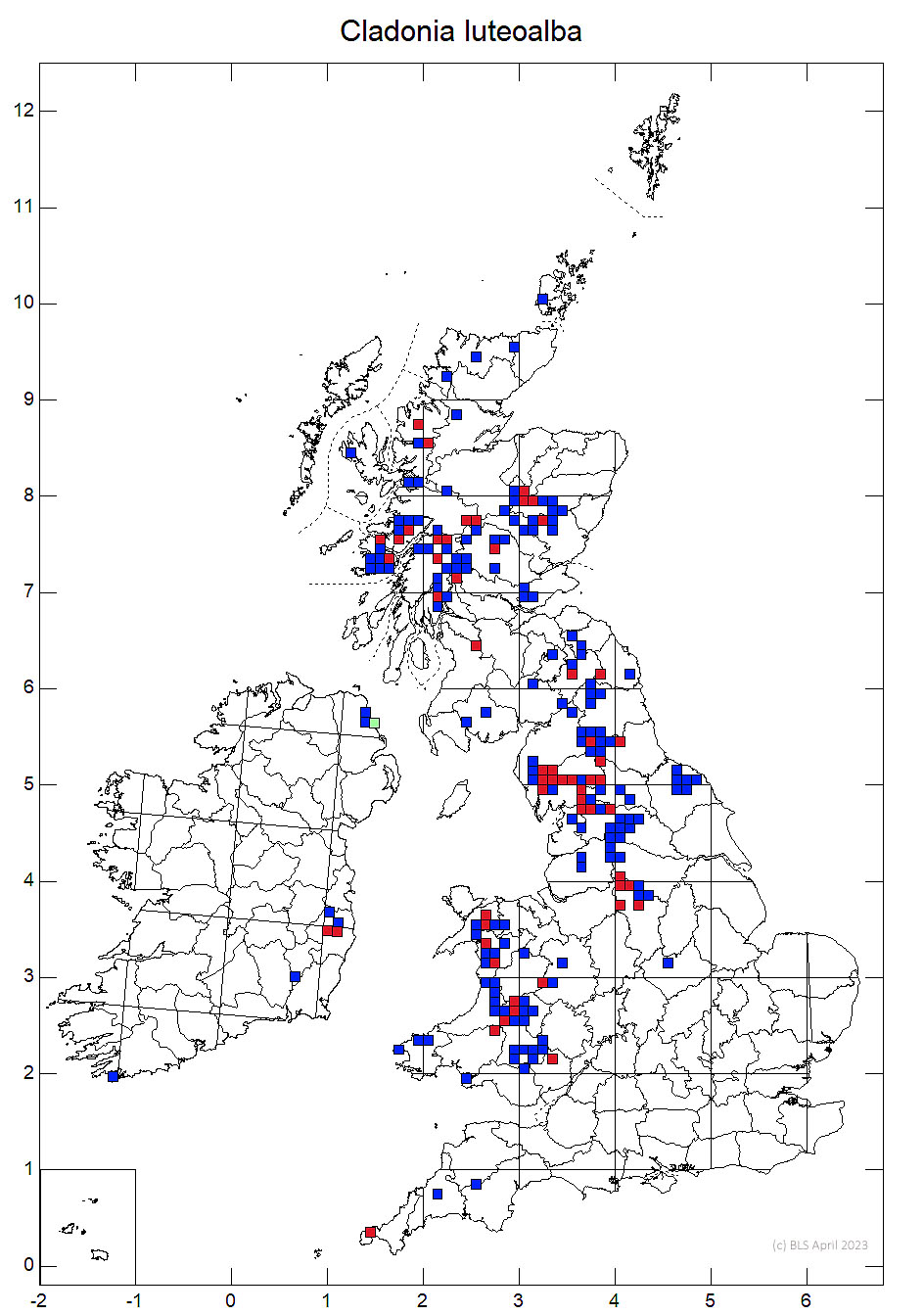Cladonia luteoalba
Usually found as large curled, often contorted, pale yellow squamules, which when examined closely have a thick cottony-arachnoid lower surface, and are K– & Pd–. Sometimes found growing on other Cladonia species (such as the C. coccifera group) and potentially starting life as a parasite. In the uplands, on peaty soils, especially peat hags, mossy boulders and on rock ledges and walls, more rarely on tree bases.
Podetia to 1 cm, rare, decorticate and bluntly subulate or with narrow scyphi, markedly curved, ± blackened at the base when old, often ± hidden among squamules. Basal squamules 2–10 mm diam., dominant, greenish yellow above, ± rounded and entire, scarcely indented, sometimes ± elongate, the margins ascending, when dry curved upwards exposing a pale yellow, distinctly cottony-arachnoid lower surface (×20 lens). Apothecia and pycnidia red. Apothecia rare, on margins of narrow cups, or sessile on squamules. Chemically variable, thallus C–, K–, KC+ yellow, Pd–, UV± white (three chemotypes occur: (a) usnic acid, zeorin and ± porphyrilic acid (widespread); (b) usnic and barbatic acids (rare); (c) usnic, squamatic and didymic acids (rare).
Recognised by the conspicuous large curled squamules, pale yellow (K–) which are finely cottony arachnoid below, a feature which distinguishes it from all other species with well-developed basal squamules. The similarly coloured C. foliacea has deeply incised squamules, is not cottony arachnoid below, contains fumarprotocetraric acid (Pd+) and occurs in different habitats. Cladonia digitata can look yellowish when wet and has basal squamules with sorediate undersides, but these are coarsely granular not finely cottony arachnoid and contain thamnolic acid (K+ yellow Pd+ yellow/orange).
The Nordic Lichen Flora suggests the chemical diversity may derive from its apparent hosts.
Sometimes found growing on other Cladonia species (such as C. coccifera) and potentially starting life as a parasite. On peaty soils, especially peat hags, mossy boulders (sometimes under Bracken) and on rock ledges and walls in exposed heathlands and on mountain summits, more rarely on bases and boughs of old trees.

N. England (Lake District, Pennines) extending to S.W. England (Cornwall), Wales and Scotland north to Caithness, also S.E. and N.E. Ireland, but probably very under recorded in Ireland.
Ahti, T. & Stenros, S. (2013) Cladonia. In: Nordic Lichen Flora, Volume 5 Cladoniaceae (ed. T. Ahti, S. Stenros & R. Moberg) 8-86. Uppsala: University of Uppsala.
Pino-Bodas, R., Sanderson, N., Cannon, P., Aptroot, A., Coppins, B., Orange, A. & Simkin, J. (2021). Lecanorales, Cladoniaceae: including the genera Cladonia, Pilophorus and Pycnothelia. Revisions of British and Irish Lichens 19: 1-45. Link
Text by Neil A Sanderson, based Pino-Bodas et al (2021)





